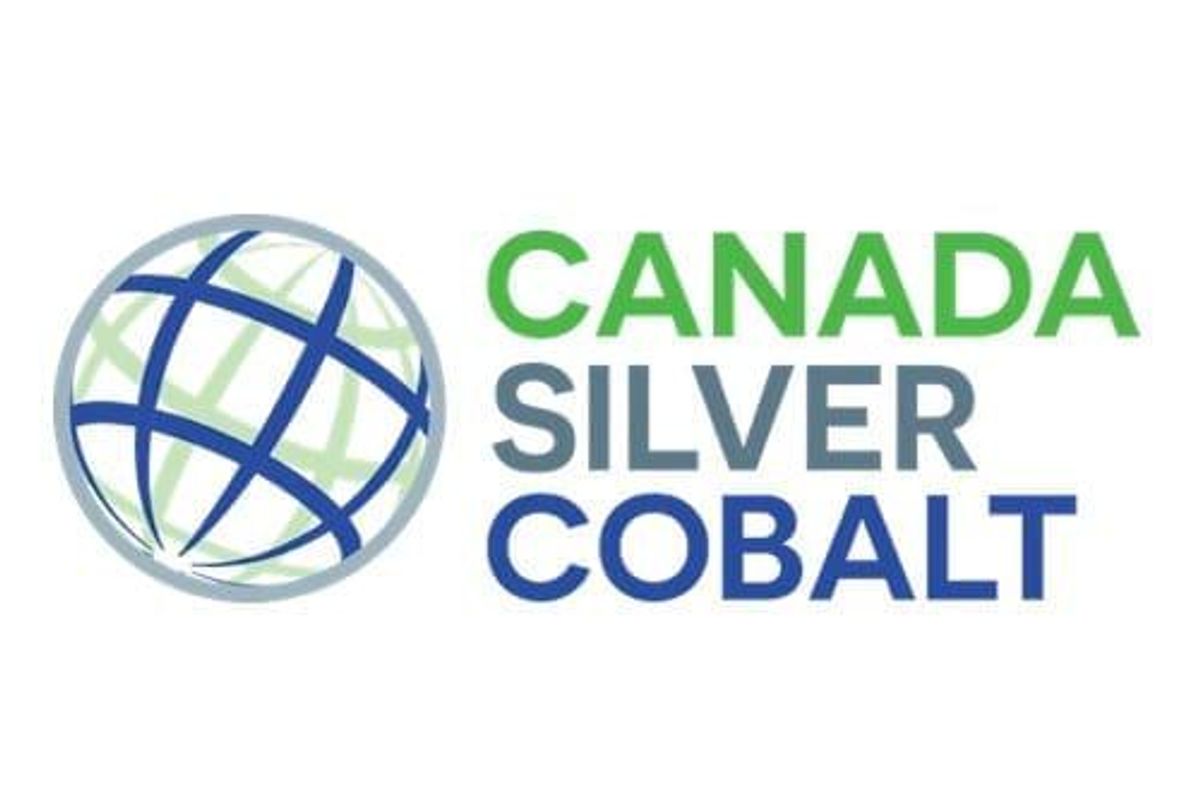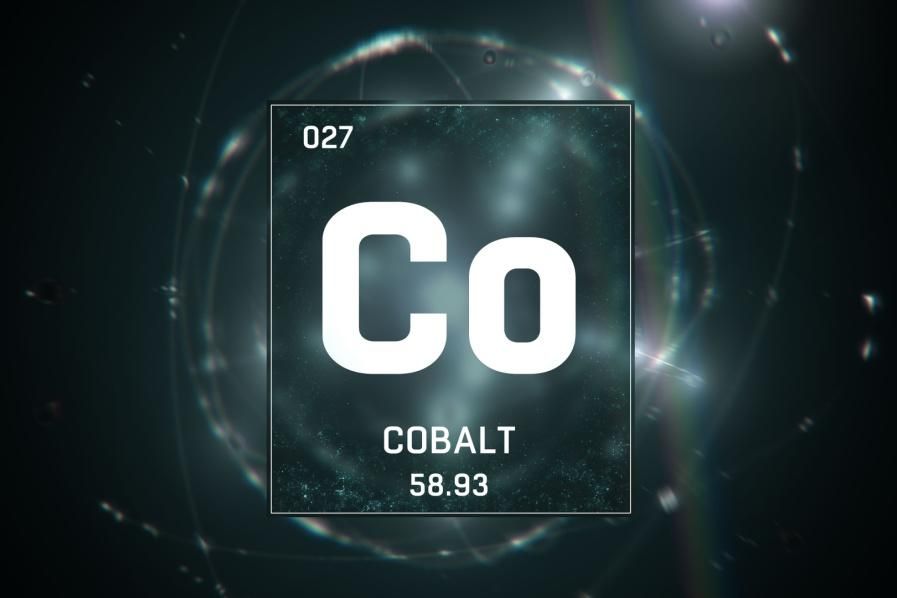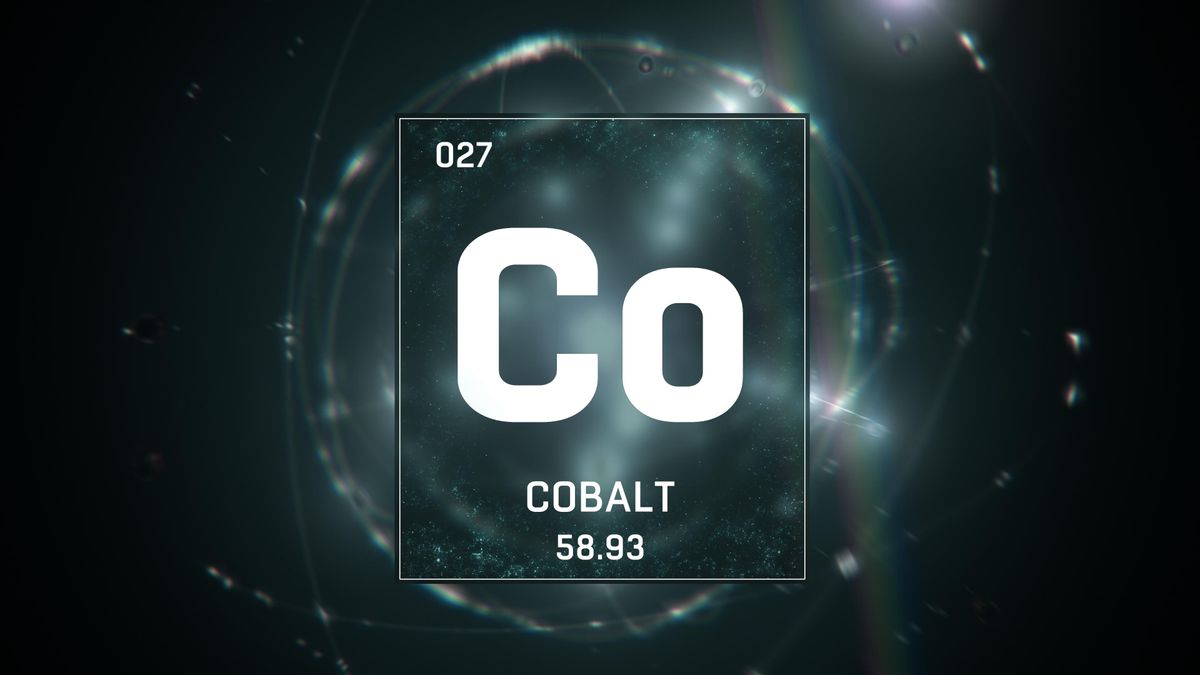
Canada Silver Cobalt Works Inc. (TSXV: CCW) (OTC: CCWOF) ( Frankfurt : 4T9B) (the "Company" or "Canada Silver Cobalt") is pleased to announce that Canada Silver Cobalt Works intersected high-grade gold mineralisation with cobalt within the high-grade silver-cobalt mineralized vein structures at the Castle property. Drilling continues around the clock, seven days a week with 2 drills. A 50,000-meter drill program is in place of which 18,000 meters have been completed.
Gold Highlights:
- CS-20-31 intersected 24.95 g/t Au over 0.30 meters from 49.70 – 50.00m with visible gold in calcite veining within Archean volcanic tuff.
- CS-20-31, drilled towards the North, intersected 3.82 g/t Au over 2.86 meters from 451.00 - 453.86m , including 6.11 g/t Au over 1.66 meters from 451.52 - 453.18m .
- CS-20-25, collared 300 meters northwest of CS-20-31, intersected three separate vein structures at shallower levels. This hole intersected 5.00 g/t Au over 1 meter, from 315.00 – 316.00m ; 0.78 g/t Au over 0.8 meters, from 145.50 - 146.30m ; and 0.6 g/t Au over 1 meter, from 240.00 – 241.00m .
| Hole Name | From (m) | To (m) | Length (m) | Au (g/t) | Ag (g/t) | Co (ppm) | Cu (ppm) | Ni (ppm) |
| CS-20-31 | 49.70 | 50.00 | 0.30 | 24.95 | na | na | na | na |
| CS-20-31 | 451.00 | 453.86 | 2.86 | 3.82 | 4 | 1 339 | 226 | 164 |
| Including | 451.52 | 453.18 | 1.66 | 6.11 | 5 | 2 015 | 64 | 230 |
| CS-20-25 | 315.00 | 316.00 | 1.00 | 5.00 | 2 | 18 | 121 | 59 |
| CS-20-22W2 | 634.00 | 637.00 | 3.00 | 0.72 | 0 | 57 | 98 | 87 |
| Including | 636.00 | 637.00 | 1.00 | 1.27 | 0 | 33 | 91 | 85 |
| CS-20-22W2 | 407.60 | 408.20 | 0.60 | 0.03 | 318 | 31 | 247 | 62 |
| CS-20-25 | 145.50 | 146.30 | 0.80 | 0.78 | 1 | 23 | 33 | 31 |
| CS-20-25 | 240.00 | 241.00 | 1.00 | 0.61 | 1 | 27 | 297 | 78 |
| CS-20-26 | 565.62 | 566.00 | 0.38 | 0.07 | 1 546 | 90 | 173 | 74 |
| CS-20-28 | 459.60 | 460.00 | 0.40 | 0.00 | 3 453 | 209 | 257 | 60 |
| CS-20-28W1 | 466.00 | 466.30 | 0.30 | 0.02 | 638 | 111 | 131 | 53 |
The gold-cobalt mineralisation found in hole CS-20-31 is the fourth potential expansion to the Robinson system, giving at least 5 mineralized veins in the area. The vein in hole CS-20-31 appears to be a different orientation to the other en echelon veins identified and is the first vein in the Robinson system with significant gold results. A percentage of holes in this program has been allocated to identifying and following up on structures in this orientation. With this new discovery, the information previously gathered to the west is being revisited and reinterpreted to identify a potential connection between the Archean gold system previously identified and these veins found in the diabase.
Matt Halliday , P.Geo., Canada Silver Cobalt's President, commented: "Hole CS-20-25 is confirming the working hypothesis regarding the potential correlation between the gold mineralization in the Robinson Zone and that previously identified in the gold zone immediately west of the Robinson where substantial Archean alteration typically associated with gold mineralisation has been recorded. Significantly, in hole CS-20-31, a gold structure within the Robinson Zone, that is associated with the silver-cobalt veins of the diabase, has been identified. Given the reports from this historic Camp of silver bars containing recoverable amounts of gold, this newly identified gold mineralization is extremely exciting. Additionally, CS-20-31 has visible gold near surface. This, and identifying further gold mineralization near surface, will dramatically impact the economics of the Robinson Zone vein system."
Gold Target Above the Diabase
Starting 40 meters downhole and continuing to 368 meters, CS-20-24 intersected multiple, potential gold-bearing quartz-carbonate, multi-generational veins with sulphide mineralisation and intense alteration in the Archean package above the Nipissing diabase. Arsenopyrite was also noted in feldspar porphyry.
As reported by Canada Silver Cobalt on March 2, 2020 , the last drill hole that targeted gold mineralisation at Castle East (CS-19-19) intersected 4.3 grams per tonne gold over four metres and 1.5 g/t Au over 12.5 metres within a 30-metre mineralised zone (core length, true width unknown at this time) grading 0.70 g/t (vertical depth approximately 240 metres). This broad interval included one metre that returned 15.2 g/t Au. This early-stage gold discovery is approximately 460 meters southwest of the visually encouraging zones encountered in CS-20-24, and the potential relationship between the two areas is being investigated as geologists await assays for this latest hole.
Now, with gold found in CS-20-31 near surface and within the diabase, the potential corridor of Archean gold has been increased by over 200m at surface. If the gold in the cobalt-silver veins comes from reactivated Archean structures, this could also indicate gold at depth below the diabase.
Location
The Castle Property is 15 km east of Pan American Silver's Juby gold deposit, 30 km due south of Alamos Gold's Young - Davidson mine, 75 km southwest of Kirkland Lake Gold's Macassa Complex, and 100 km southeast of new gold discoveries in the Timmins West area.
Quality Assurance/Quality Control
Castle East core samples were collected using a 0.3-meter minimum length and a 1-meter maximum length. Drill core recovery averaged 95%. Two quality control samples (blank and standards) were inserted into each batch of 20 samples. The drill core was sawn with one half of the split core placed in a plastic bag with the sample tag and sealed, while the second half was returned to the core box for storage on site. Where silver or gold was visually and significantly present, a pulp-metallic analysis on full sample was requested for the silver and gold assays where the entire sample is dried, weighed and crushed over 95% then fully pulverized and passed through 200-mesh screen to create a plus 200-mesh fraction (metallics) and a minus 200-mesh fraction (pulp). The minus 200-mesh fraction (fines) was run using geochemical analysis with AA finish for Ag, Au, Cu, Ni, and Co. The entire +200 mesh (coarse) fraction was analyzed using gravimetric processes (fire assay) for both Ag and Au to provide a weighted average assay for the entire sample. Swastika Laboratories is an ISO 17025 certified lab independent of Canada Cobalt.
Qualified Person
The technical information in this news release was prepared under the supervision of Mr. Matthew Halliday , P.Geo., (APGO) President of Canada Silver Cobalt Works Inc., a qualified person in accordance with National Instrument 43-101.
About Canada Silver Cobalt Works Inc.
Canada Silver Cobalt Works released the first-ever resource in the Gowganda Camp and greater Cobalt Camp. In May 2020. A total of 7.56 million ounces of silver in Inferred resources comprising very high-grade silver ( 8,582 grams per tonne un-cut or 250.2 oz/ton) in 27,400 tonnes of material from two sections (1A and 1B ) of the Robinson Zone beginning at a vertical depth of approximately 400 meters. The discovery remains open in all directions (1A and 1B are approximately 800 meters from the east-trending Capitol Mine workings) (mineral resources that are not mineral reserves do not have demonstrated economic viability) (refer to Canada Silver Cobalt Works Press Release May 28 , 2020. Report reference: Rachidi. M 2020, NI 43-101 Technical Report Mineral Resource Estimate for Castle East, Robinson Zone, Ontario, Canada , with an effective date of May 28, 2020 and a signature date of July 13, 2020 .
Canada Silver Cobalt's flagship Castle mine and 78 sq. km Castle Property features strong exploration upside for silver, cobalt, nickel, gold and copper in the prolific past producing Gowganda high-grade Silver District of Northern Ontario . With underground access at Castle, a pilot plant to produce cobalt-rich gravity concentrates on site, a processing facility (TTL Laboratories) in the town of Cobalt, and a proprietary hydrometallurgical process known as Re-2OX for the creation of technical grade cobalt sulphate as well as nickel-manganese-cobalt (NMC) formulations, Canada Silver Cobalt is strategically positioned to become a Canadian leader in the silver-cobalt space.
"Frank J. Basa"
Frank J. Basa , P. Eng.
Chief Executive Officer
Neither the TSX Venture Exchange nor its Regulation Service Provider (as that term is defined in the policies of the TSX Venture Exchange) accepts responsibility for the adequacy or accuracy of this release. This news release may contain forward-looking statements including but not limited to comments regarding the timing and content of upcoming work programs, geological interpretations, receipt of property titles, potential mineral recovery processes, etc. Forward-looking statements address future events and conditions and therefore, involve inherent risks and uncertainties. Actual results may differ materially from those currently anticipated in such statements.
SOURCE Canada Silver Cobalt Works Inc.

![]() View original content: https://www.newswire.ca/en/releases/archive/December2020/17/c4688.html
View original content: https://www.newswire.ca/en/releases/archive/December2020/17/c4688.html




